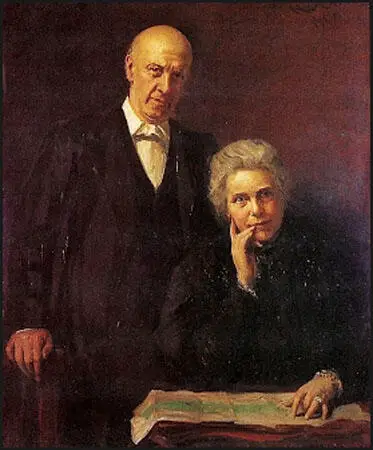Toynbee Hall
In 1884 an article by Samuel Augustus Barnett in the Nineteenth Century Magazine he suggested the idea of university settlements. The idea was to create a place where students from Oxford University and Cambridge University could work among, and improve the lives of the poor during their holidays. According to Barnett, the role of the students was "to learn as much as to teach; to receive as much to give". This article resulted in the formation of the University Settlements Association.
Later that year Barnett and his wife, Henrietta Barnett, established Toynbee Hall, Britain's first university settlement. It was named after their friend and social reformer, Arnold Toynbee, who had died when he was only thirty years old. Most residents held down jobs in the City, or were doing vocational training, and so gave up their weekends and evenings to do relief work. This work ranged from visiting the poor and providing free legal aid to running clubs for boys and holding University Extension lectures and debates; the work was not just about helping people practically, it was also about giving them the kinds of things that people in richer areas took for granted, such as the opportunity to continue their education past the school leaving age. As Seth Koven has pointed out: "Settlements, as first envisioned by the Barnetts, were residential colonies of university men in the slums intended to serve both as centres of education, recreation, and community life for the local poor and as outposts for social work, social scientific investigation, and cross-class friendships between élites and their poor neighbours."

Toynbee Hall served as a base for Charles Booth and his group of researchers working on the Life and Labour of the People in London. Other individuals who worked at Toynbee Hall include Richard Tawney, Clement Attlee, Alfred Milner, William Beveridge, Beatrice Webb and Robert Morant. Other visitors included Guglielmo Marconi who held one of his earliest experiments in radio there, and Pierre de Coubertin, founder of the modern Olympic Games, was so impressed by the mixing and working together of so many people from different nations that it inspired him to establish the games. Georges Clemenceau visited Toynbee Hall in 1884 and claimed that Barnett was one of the "three really great men" he had met in England.
Charles Robert Ashbee, one of the people involved in the Arts and Crafts Movement, was a resident in 1888, as was Hubert Llewellyn-Smith, who went on to run New Survey of London Life and Labour for the London School of Economics in the 1930s. The Whitechapel Gallery had its roots in the art exhibitions held originally in the St. Jude's school rooms. These exhibitions were intended to bring the art of major galleries to the people of the East End. The 1926 General Strike came to an end at Toynbee Hall - the employers and the union leaders met there to discuss their terms.
In 1888 Jane Addams and Ellen Gates Starr visited Toynbee Hall and were so impressed with what they saw that the returned to the United States and established a similar project, Hull House, in Chicago. The Settlement Movement grew rapidly both in Britain, the United States and the rest of the world. The settlements and social action centres work together through the International Federation of Settlements.
Toynbee Hall continues to work today towards solving social problems - developing practical but innovative solutions and then exporting them to wider society. Many volunteers work at Toynbee Hall, including ones who are residents. The residents, like those in the nineteenth century, work during the day or study for postgraduate degrees or to train for careers in social work or the legal profession, and give up their spare time to work with elderly people, disadvantaged children and teenagers, the legal advice centre, and many others. More than ever society needs new solutions for new social problems and, as we enter the early stages of the 21st century, Toynbee Hall will continue to develop new programmes and blaze new trails.
Primary Sources
(1) Jane Addams described visiting Toynbee Hall with Ellen Gates Starr in a letter to Alice Haleman (14th June, 1888)
It is a community for University men who live there, have their recreation and clubs and society all among the poor people, yet in the same style they would live in their own circle. It is so free from "professional doing good", so unaffectedly sincere and so productive of good results in its classes and libraries so that it seems perfectly ideal.
(2) In his autobiography, As It Happened, Clement Attlee described his time at Oxford University.
Oxford was at that time predominately Conservative though there was a strong Liberal group, notably at Ballioli, which counted among its undergraduates such men as R. H. Tawney and William Temple, the future Archbishop, whose influence on socialist thought was in later years to be so great. Socialism was hardly spoken of, although Sidney Ball at St. John's and A.J. Carlyle, at University College, kept the light burning.
I was at this time a Conservative, but I did not take any active part in politics. I never belonged to any political club. Some of my friends were interested in the University Settlements - Oxford House and Toynbee Hall.

